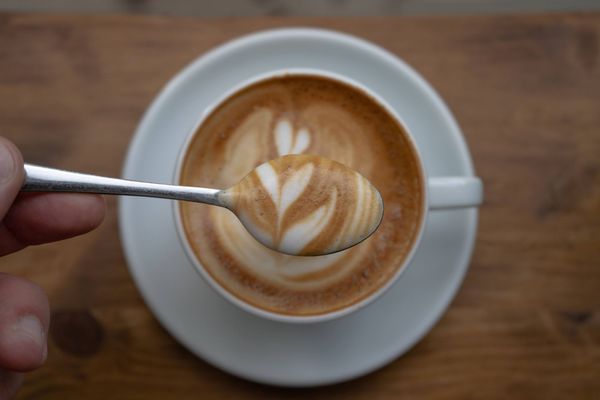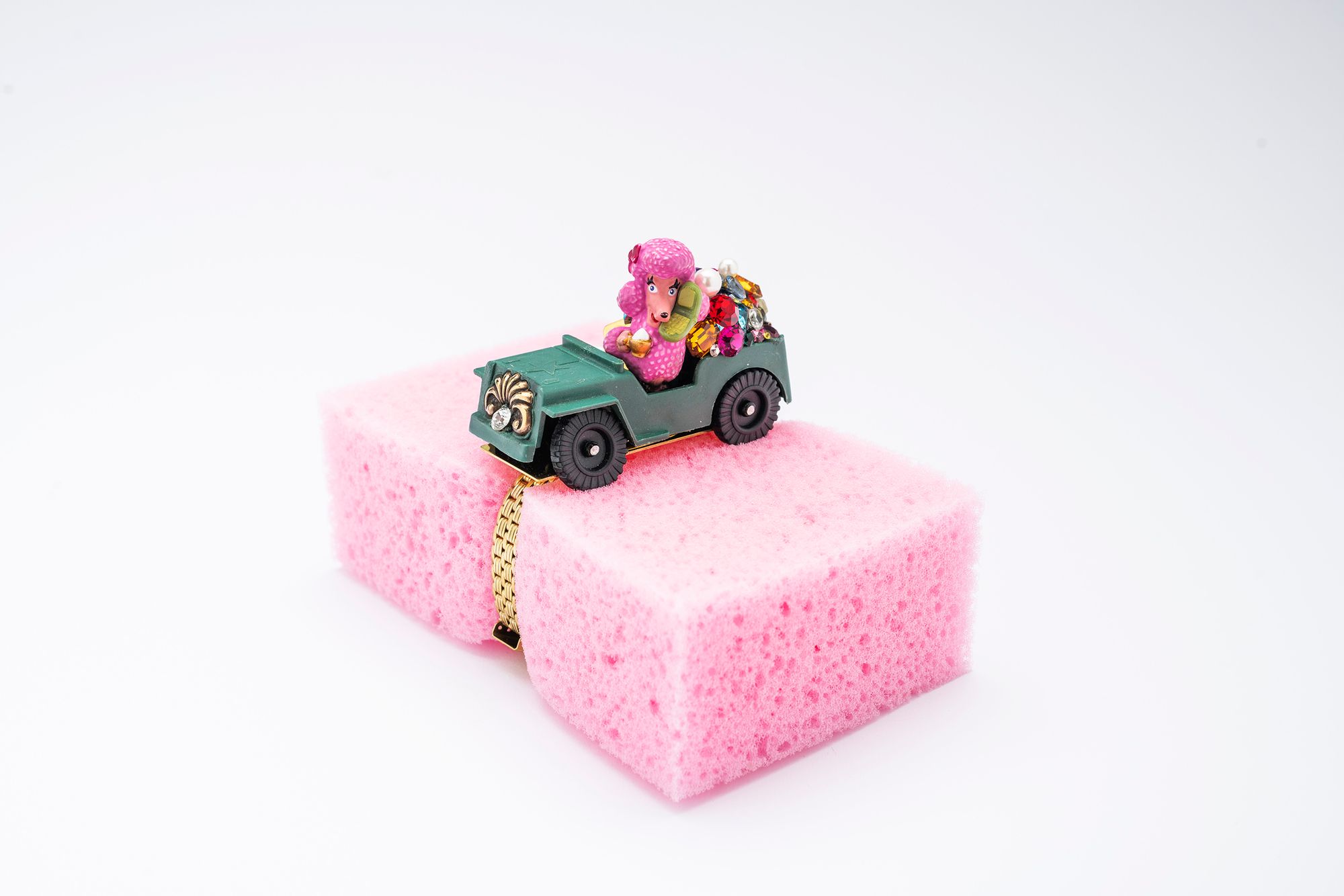As absurd as they may seem at first glance, Réka Lőrincz’s works are just as experimental. In the work of the Hungarian artist, social sensitivity is complemented with a touch of humor and sophistication. Contemporary jewelry, objects, and installations at the intersection of body, mind, and soul. Interview.
Réka Lőrincz began to approach the world of visual arts about twenty-five years ago. As art was already present in her family in many forms, she felt that this was the field that could be of real interest to her. Despite being a rebel at the time, she began to find her path in the goldsmithing department of The Art School of Buda. She then went on to study product and jewelry design at the Moholy-Nagy University of Art and Design, where she also found the necessary freedom to create. She likes to embrace the malleable nature of contemporary jewelry in her creative philosophy, not allowing herself to be confined to a fixed framework in her artistic work.
How would you describe what you do?
Whatever I feel like doing. As soon as I pigeonhole myself, I exclude other possibilities, which is why I don’t claim to be exclusively engaged in contemporary jewelry. If an idea comes to me, I create it as an object or installation, whichever suits it best. The word ‘mood’ is also particularly important: it is what we need to bear in mind throughout our lives to know what makes us happier. Essentially, I create lasting objects, and I have an impact on what I leave behind: so I feel a responsibility to seek out what makes me happier and what creations bring me joy.
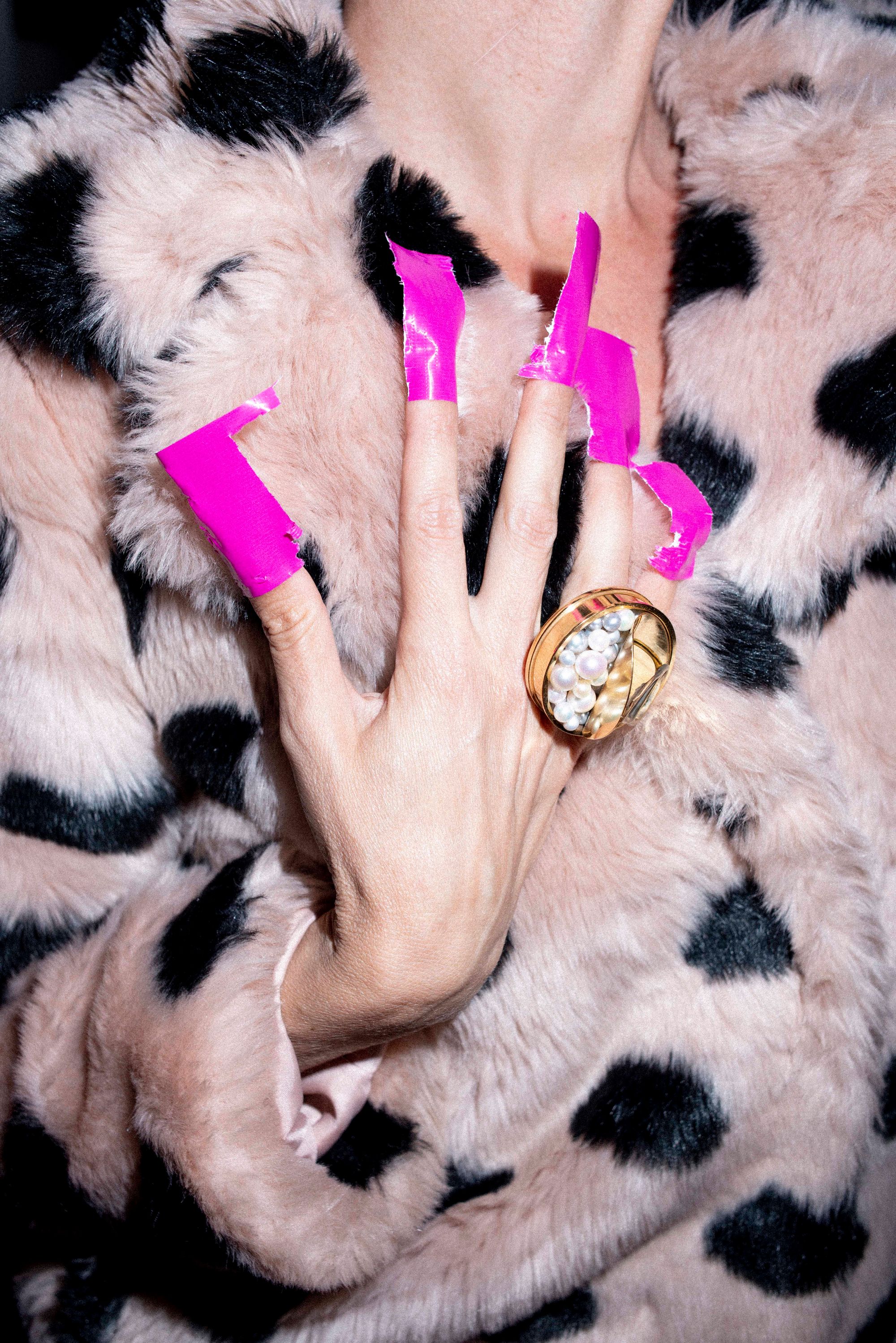
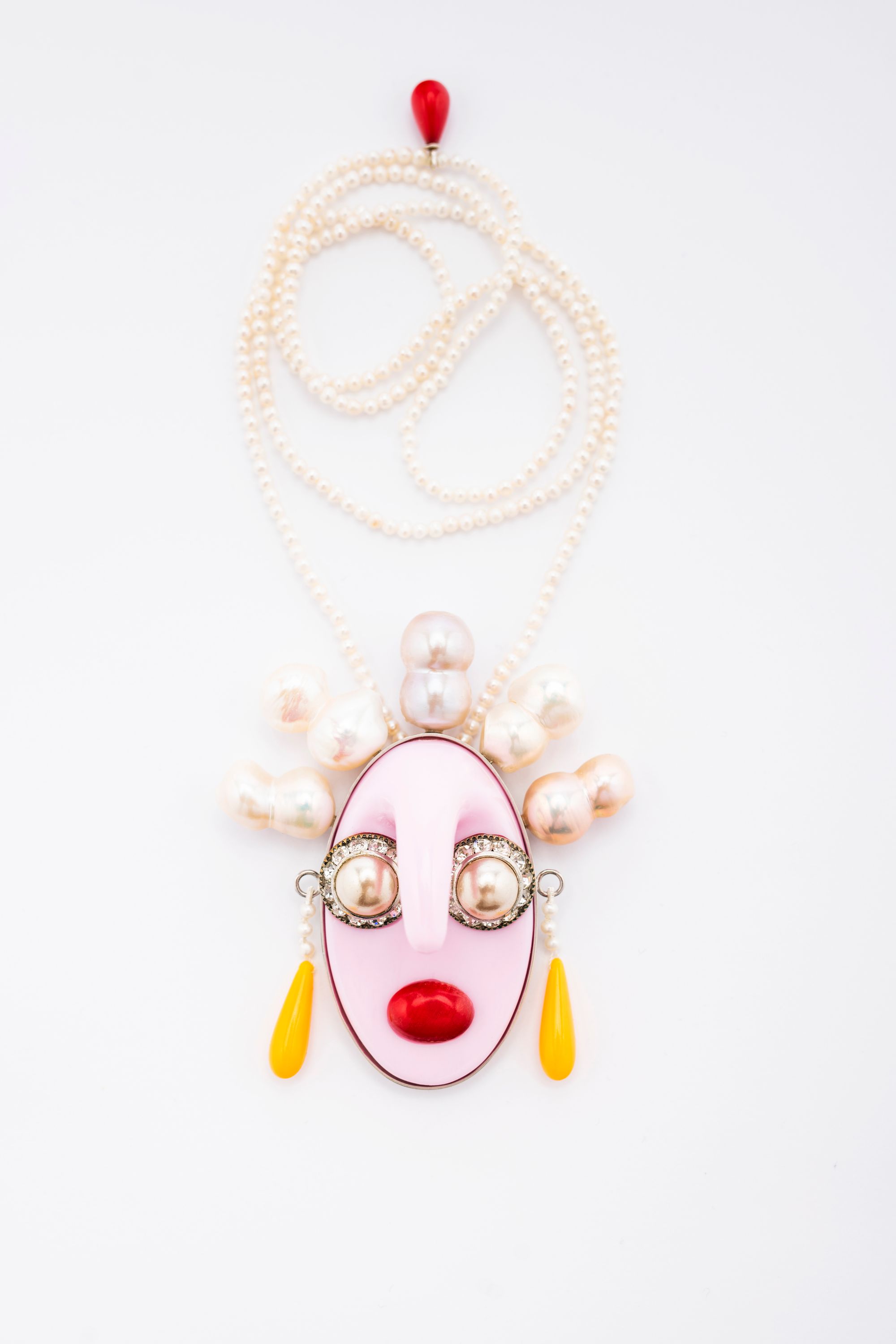
How would you define contemporary jewelry? How do you approach this genre?
For me, it’s about the world today. At the same time, I like to leave it open to interpretation—not to cement the meaning. I’m interested to see what other, new meaning jewelry will have for me when I wake up tomorrow. What makes a jewelry? Does jewelry even remain jewelry if it is not in contact with the body? In my experience, these questions can only really open up when I do not limit myself or my objects. As soon as I enclose myself, I enclose my thoughts, and I don’t fully let my various ideas manifest.
As you also suggest, contemporary jewelry can also be seen as a reflection on the cultural and social phenomena of the time. What ideas shape your jewelry pieces? What messages do you want to convey through your creations?
In my work, I am interested in people, in society itself, in this ‘mass’ of which I am a part. In the beginning, there was perhaps more criticism involved in my work, but then I saw more of a charm in the way we really are. So I was looking for different statements, without any particular judgment. With my works, I am also holding up a mirror to myself, to the kind of medium I am part of.

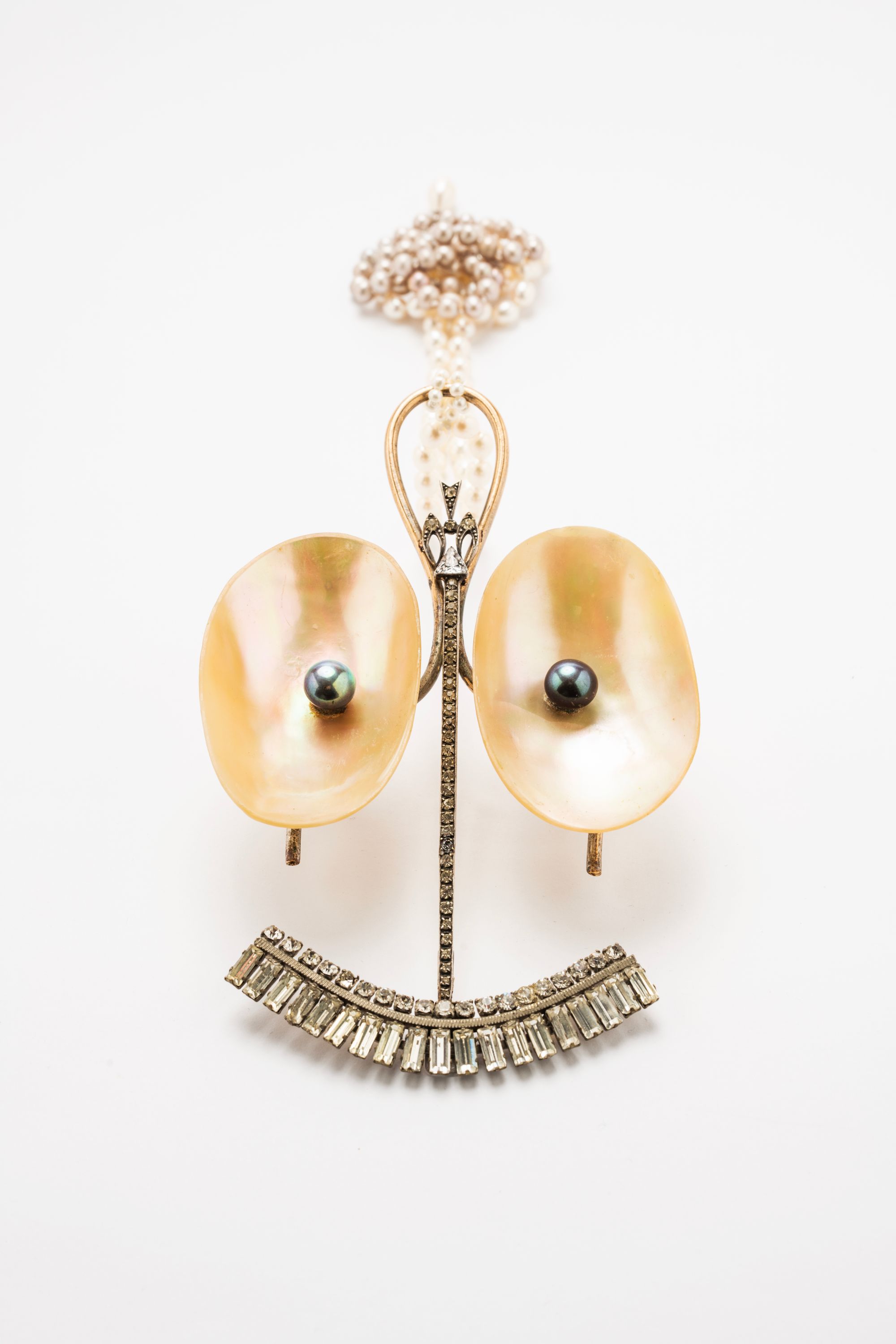
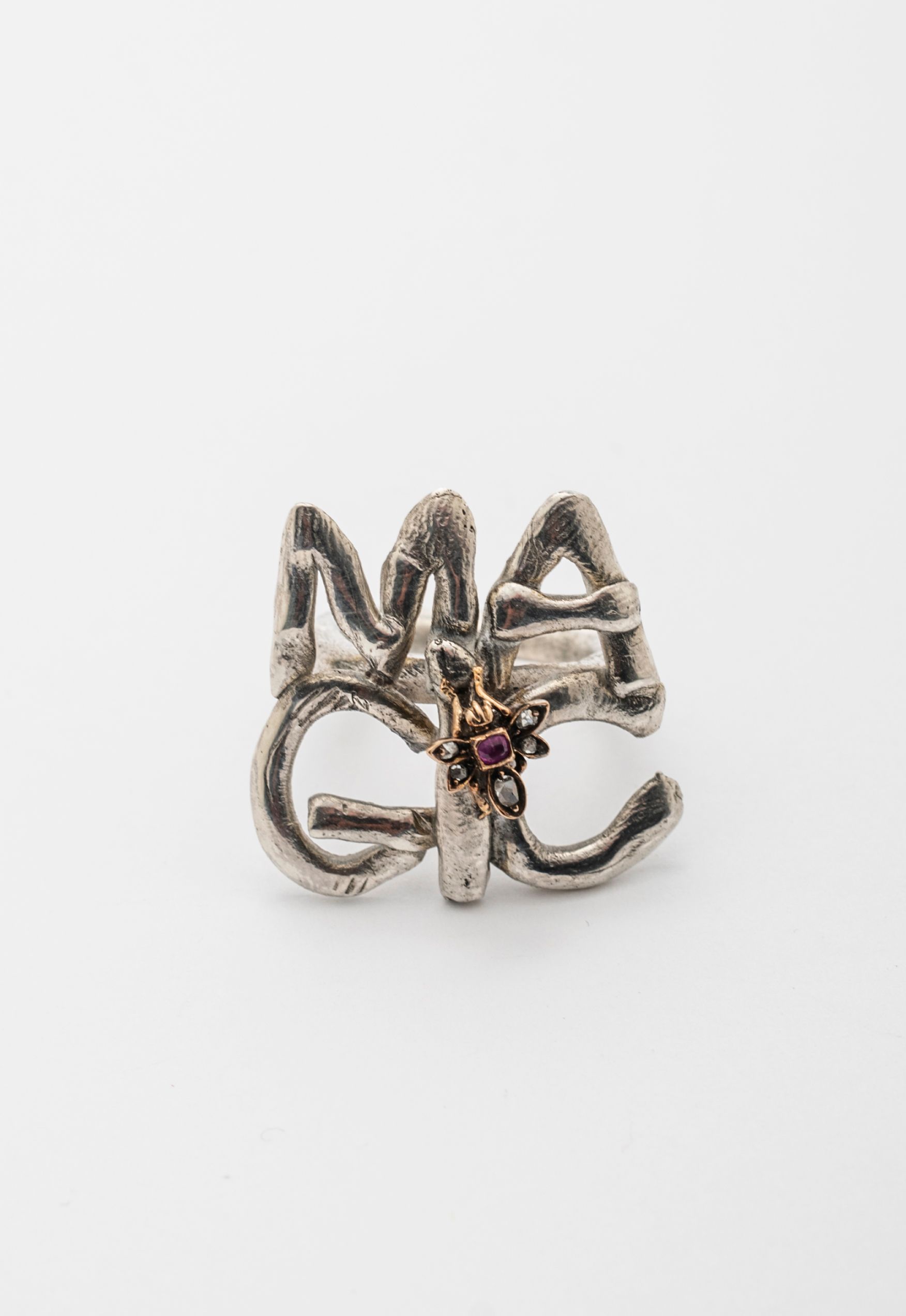
As I graduated in design, the conscious mind played an important role in the design process. And I felt that there was room for improvement in this for me, and I allowed myself to let my objects manifest subconscious thoughts as well as physical qualities. So, pushing myself out of the comfort zone of object making, I started to work on self-awareness and also took a mental health course to bring this area into my work. As a foundation for this, I was able to learn various techniques for healing and creating harmony.
Are there recurring motifs in your work? What meaning do they have for you?
One recurring element in my work, for example, is over-accumulation—everyone has some kind of experience with being attached to or collecting objects. In my object titled On The Way Back Home, for example, the truck full of antique jewelry suggests that we women are always longing for a new dress or a new object. I wanted to process this feeling, without any judgment, so that we can embrace this quality. It is also quite typical of my work that the antique meets something contemporary. My intention with this is to weave together different periods and generations like a tapestry within a single object, thus creating an opportunity for each generation to come closer together.
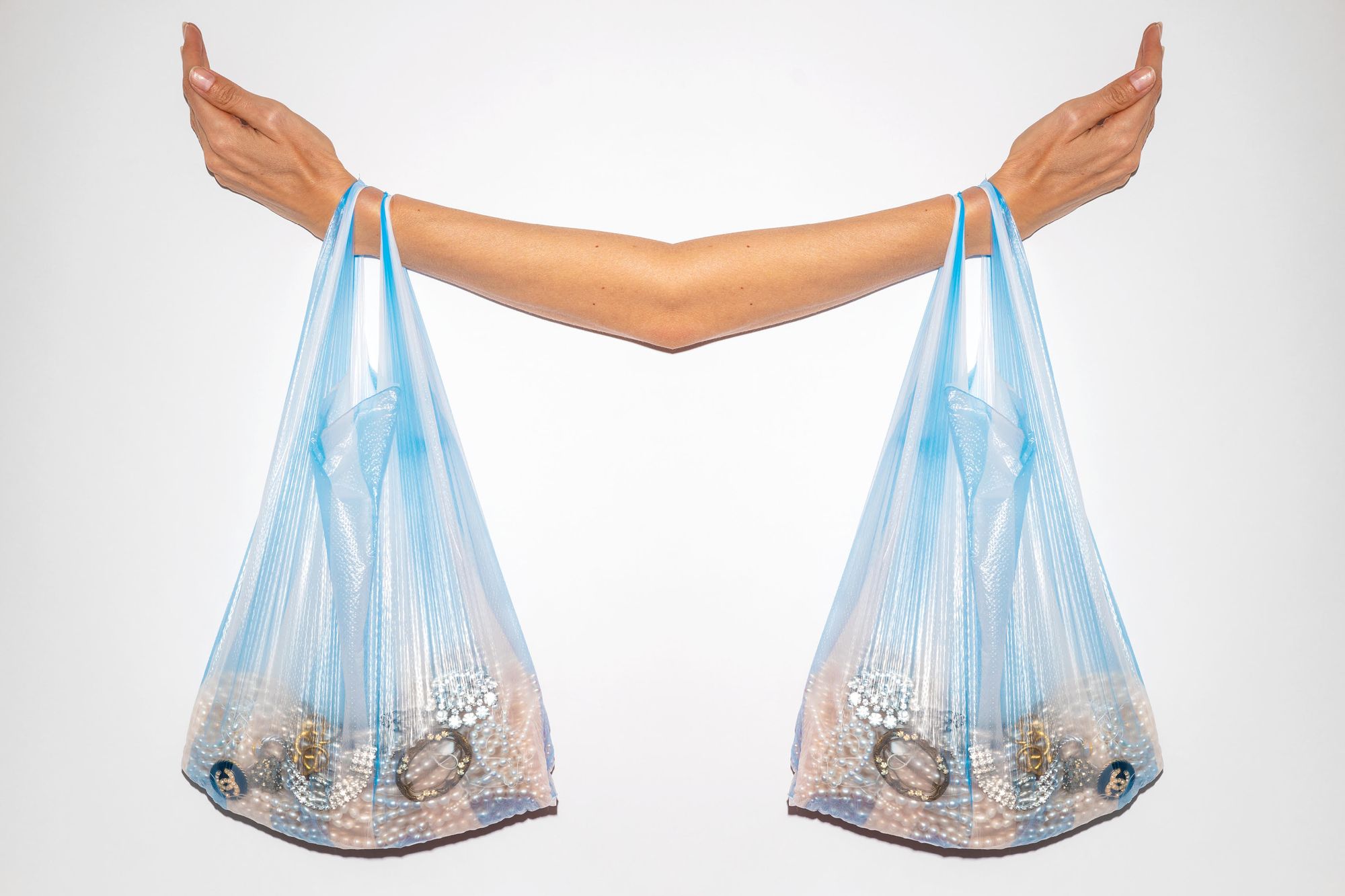
Unlike a lot of contemporary jewelry, yours are wearable pieces, something you have talked about in previous interviews. For example, the artist Zsófia Keresztes and the curator Mónika Zsikla wore your brooches at the opening of the Hungarian pavilion at the Venice Biennale. Why is wearability important to you and who are your buyers?
I work with several galleries abroad, so I don't always have precise information about my customers. In Hungary, my work is mostly bought by art collectors, gallerists, and artists. From my foreign customers, for example, I was very honored when Dr. Hubert Bari, one of the art advisors to the Qatari monarch, contacted me to buy my jewelry. However, I must admit that I was impatient for a long time about the wearability of my works of art. I have always liked the freedom of contemporary jewelry, so at first, I was not compelled to make them work well when worn, but over time I had to honor my customers with this.
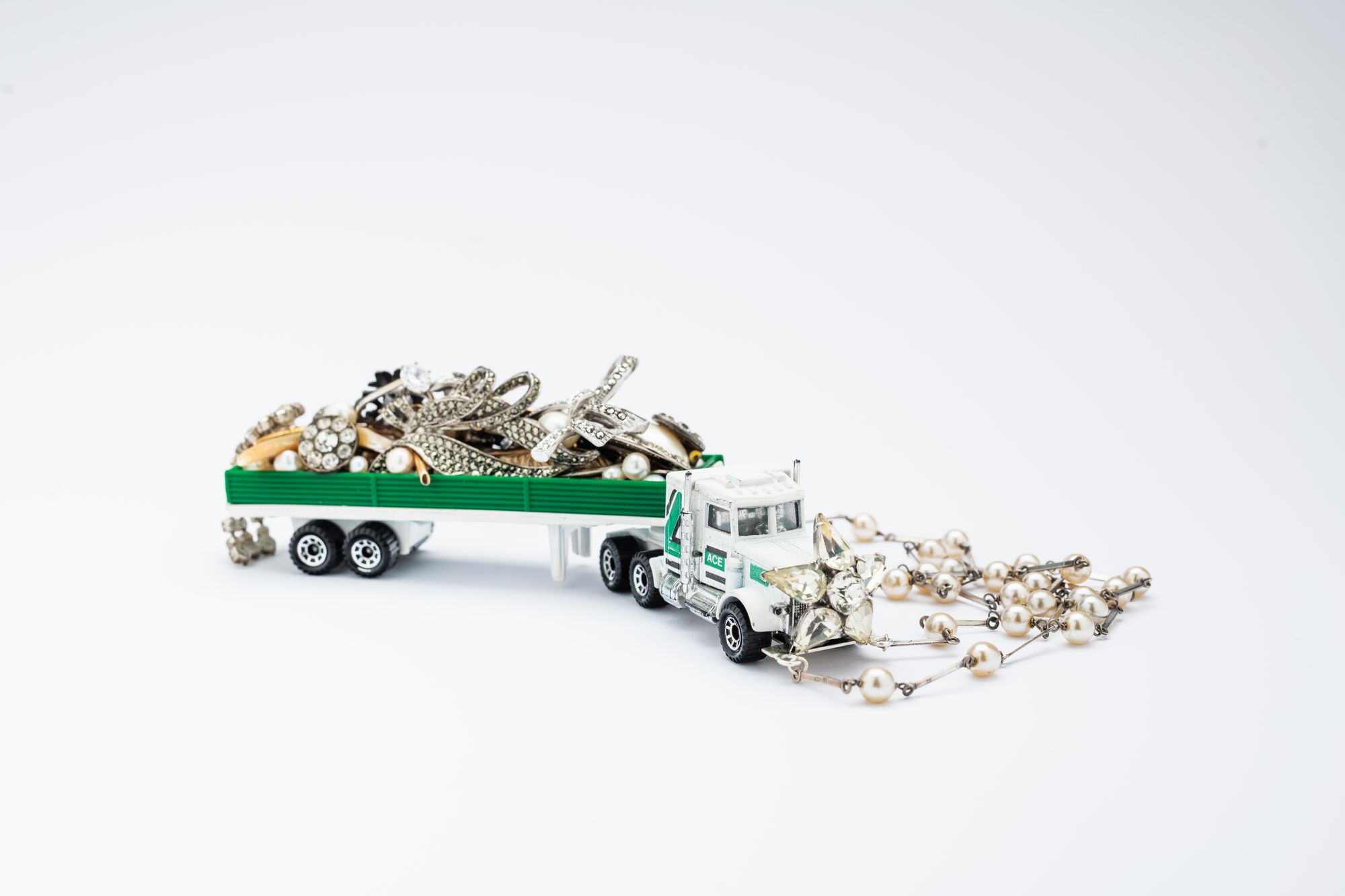


You have had several exhibitions around the world, including Stockholm, Munich, New York, and Seoul. What is your experience, does it depend on the culture how people relate to contemporary jewelry?
In the US they are very open to this genre, they are interested in everything. A lady over ninety has bought from me, so there’s really no limit. While here, in the US, or even in Seoul, people prefer my larger jewelry, in Japan my pieces are considered too big. There’s also a difference in what material people prefer: Italians, for example, prefer more the classic, precious materials.
What project are you currently working on? Where will your work be shown next?
The main focus of my creative work is not on jewelry at the moment. For example, I am currently preparing an exhibition with Dorottya Vékony at Torula in Győr. In my installation work, I am concerned with the quality of existence: how our inner feelings affect our environment and how much we are the creators of our own lives. The installation will be accompanied by an audio material, in which the themes of utility, the right to exist, the need to conform, and worth versus worthlessness will be emphasized.
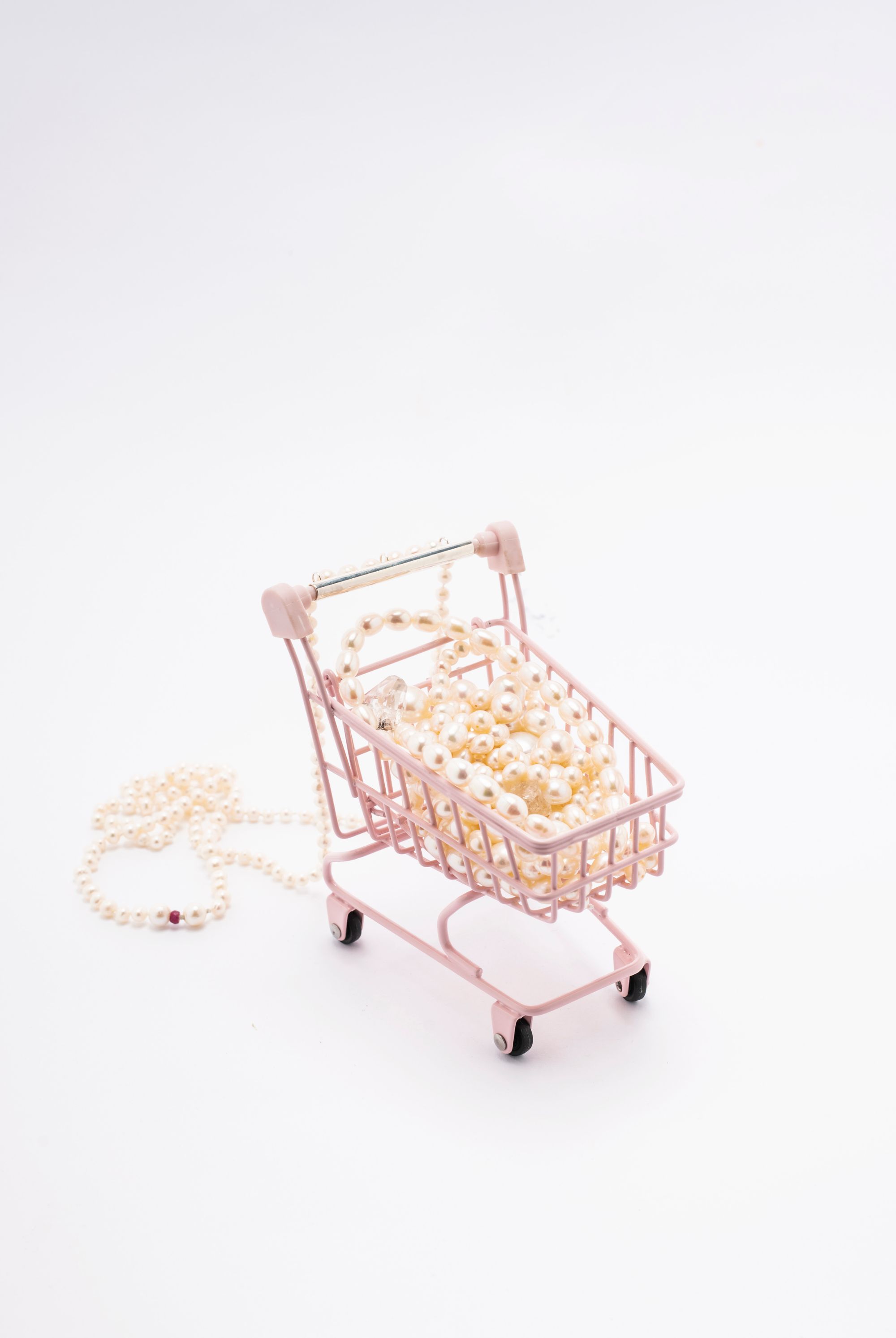
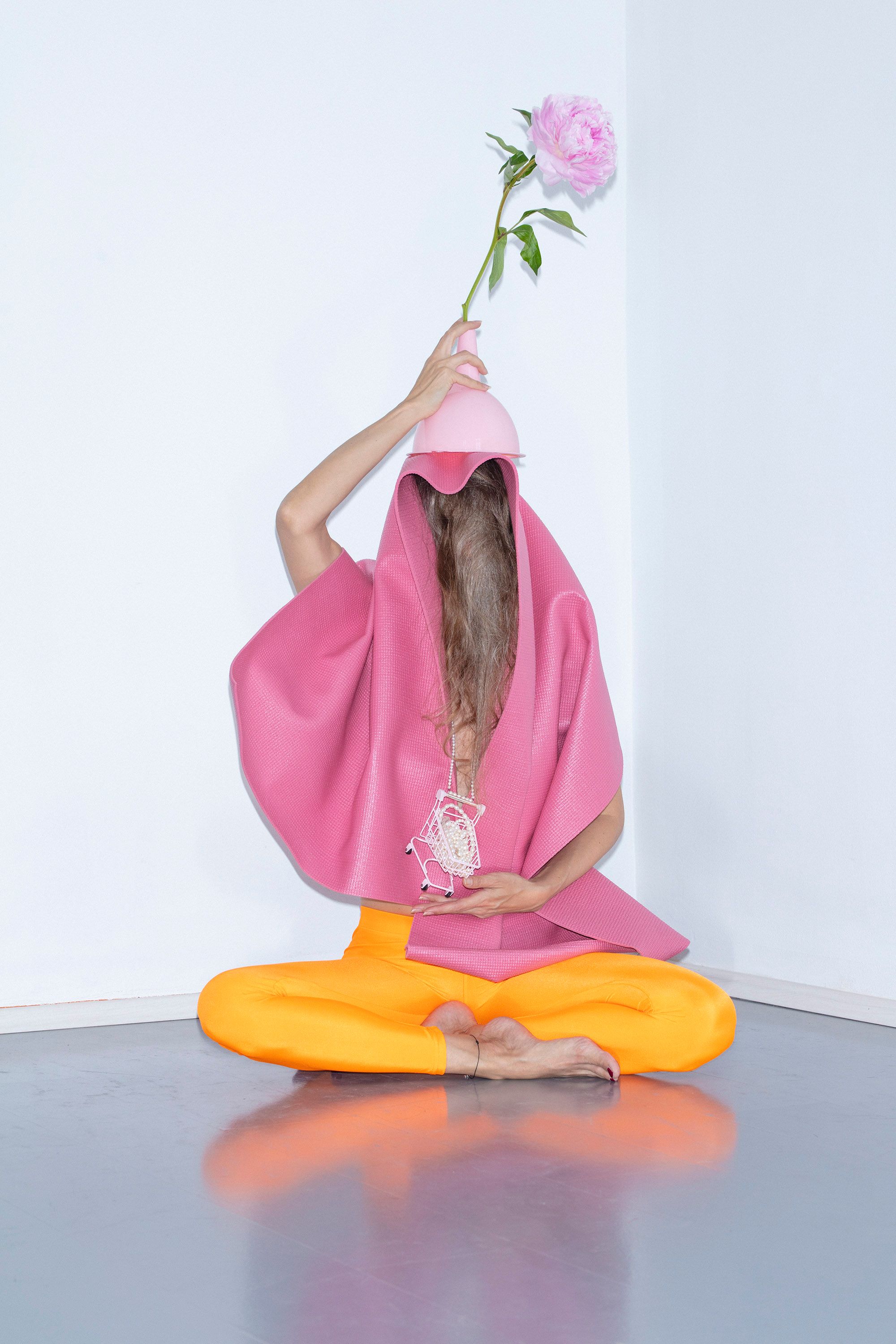
The joint exhibition of Réka Lőrincz and Dorottya Vékony will be open to the public from 6 May 2023 at the Torula exhibition space in Győr. The joint project of the two artists seeks answers to questions about how rituals manifest themselves in the form of cultural codes in the present and how they affect our everyday lives.
Cover image: It's okay bracelet, Photo: Talabér Géza
Photos: I am Barnie, Éva Szomba, Géza Talabér
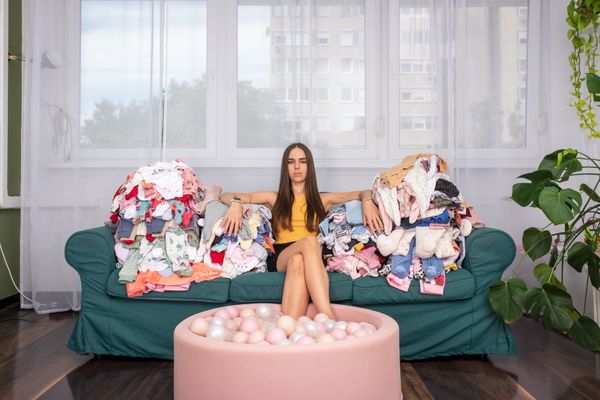
The secret life of panel dwellers | Photo series by Balázs Somorjai

A film shot in Prague wins the Oscar for Best Foreign Language Film
